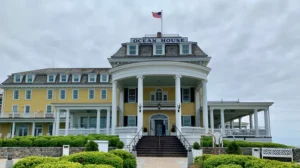Texas is facing one of its deadliest natural disasters in decades. More than 160 people are still missing after flash floods swept through Kerr County during the July Fourth holiday weekend. Over 100 lives have already been lost.
The number of missing persons jumped sharply after a hotline was launched for families. Many of the missing are believed to have been visitors in the Hill Country area. They were likely staying at cabins, camps, or in tents without official records of registration.
Kerr County is home to many popular camping spots along the Guadalupe River. One of the worst-hit locations was Camp Mystic, a Christian girls’ summer camp. There, 27 campers and counselors lost their lives. Officials say five campers and one counselor are still unaccounted for.
The floods began before sunrise last Friday, following hours of intense rain. The Guadalupe River rose by 26 feet in under an hour. The surge swept away tents, cabins, and trailers without warning. Some people escaped by swimming through windows or clinging to ropes. Others held onto trees until they were rescued.
Crews are working non-stop. Hundreds of volunteers are helping professional teams. Airboats, helicopters, and horses are being used to cover rough terrain. Heavy machines are digging through mud, broken trees, and piles of debris that stretch for miles.
This is now one of the largest search efforts in Texas history.
Governor Greg Abbott said the rescue work will not stop until every missing person is found. He toured the disaster area by helicopter and spoke at a news event on Tuesday. He confirmed that the number of missing had tripled due to the new reporting hotline.
When asked about who might be responsible for failing to warn the public, Abbott refused to point fingers. He compared the disaster response to a football team. “Championship teams don’t blame others. They regroup and push forward,” he said.
President Donald Trump is expected to visit Texas on Friday. He has promised full federal support for the state’s recovery. Relief aid and other resources are being prepared.
Scenes at Camp Mystic are heartbreaking. Mud-covered pillows and blankets lie outside cabins. Children’s luggage decorated with colorful stickers is scattered across grassy hills. Among those confirmed dead are a second-grade girl who loved sparkles, a 19-year-old counselor, and the 75-year-old camp director.
Bob Henson, a meteorologist at Yale Climate Connections, said this is the deadliest inland flooding in the U.S. since 1976. That year, 144 people were killed in Colorado’s Big Thompson Canyon flood.
Weather experts note that while no single storm can be blamed on climate change, a warming climate increases the risk of extreme weather. Hotter air and oceans hold more moisture, which can lead to heavier rainfalls and sudden floods.
Public attention is now turning to emergency systems. Many are asking whether early warnings could have saved lives. With so many visitors in remote areas, tracking and alerting them remains a major challenge.
As search teams press on and families wait for news, the disaster has united Texas communities. Volunteers continue to show up daily, determined to help find those still lost.







